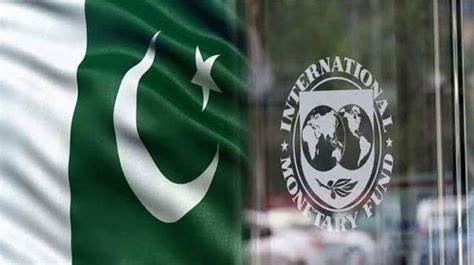The IMF has predicted that Pakistan will have the world’s highest level of net debt that will stand at 65.6 percent of the GDP in 2025. Yet, this forecast has come at a time where prudent questions about its debt sustainability is in question.
It is IMF’s analysis grounded on Pakistan current fiscal situation like the country’s inability to fund its expenditures and reduced revenue collection besides facing budget deficits regularly.
These issues have worsened the debt situation in the country due to which the IMF has called upon Pakistan to undertaker structural reforms to reverse this trend.
Rising Debt and Economic Challenges
High and increasing debt to GDP ratio of Pakistan is the culmination of fiscal indiscipline, slow growth rate and external factors including COVID-19 shocks. Political instability, inflation and increased energy costs have also compounded the problem for the country’s economy.
Lacking adequate measures, the IMF predictions reveal a possibility where Pakistan’s net debt may reach 65.6% of GDP in 2025.
It should be noted that the government has adopted several measures to slow down the growth of the debt, using the Policy of Fiscal Consolidation Measures and addressed to organizations of Intentional Credit. However, these efforts have not been fruitful enough to turn about this trend around.
The IMF in its latest report stated that without major improvements in tax, fiscal spending and external borrowing, Pakistan will face trouble in dealing with higher liabilities. The IMF projection is an eye opener for the authorities as the government needs to embark on fiscal reforms to avoid a possible debt debacle.
IMF Recommendations for Pakistan
The IMF has made several suggestions for Pakistan in a recent report to fix the country’s debt and foster economic growth. Rare among these is increasing more efficiency in tax collection, one of the lowest among the partner states.
The government can increase its revenue from tax to finance its activities, hence, …[reducing] the amount it borrows.
IMF also encouraged Nepalese authority to minimize public sector losses and contain the avoidable expenses to tackle fiscal deficit. Along with the fiscals’ reforms, the IMF suggested that Pakistan should enhance the quality of its monetary policy regarding the issues of inflation, which has been running high for years for the country.
One approach would be to rein in inflation because this way the costs of borrowed funds would be less of a burden on government finances. The IMF also pointed to the lack of clarity in debt management and asked for better reporting on the public debt to restore investors’ confidence.
Impact on Pakistan’s Economic Future
The IMF predicted with the increase in debt to 65.6% GDP by 2025 that Pakistan would face critical risks for its future economy.
Current high debt to GDP ratio may reduce the budgetary capacity of the government to allocate resources to key integration points such as infrastructure, health and education among others.
And that could discourage foreign investors who may consider Pakistan a very risky country to invest in given the debt state of the country.
All in all, the IMF estimate makes many people realize that Pakistan must act as soon as possible to work on its fiscal crisis.
Needless to say, the following years will be challenging, but the needed reforms, if captured, might help the country avoid crossing the limit of 65, 6% of GDP in net debt in 2025.
The successful economic performance management together with sustained and vigorous exercise will help Pakistan to bring about sustainable economic development for the country. The IMF forecast then becomes an important baseline for drawing attention to the need to practice proper economic management.









